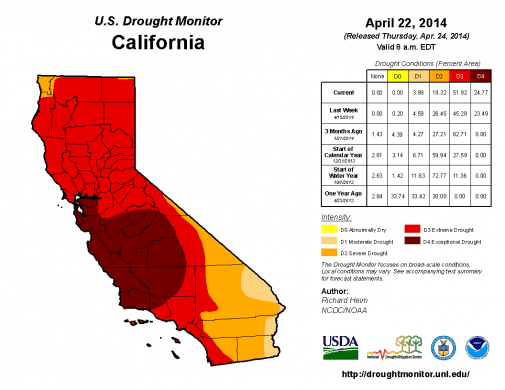USA offentliggjorde et bidrag til en ny international klimaaftale i marts 2015. Nu har delstaten Californien ligeledes offentliggjort en klimaplan.
Og den er langt mere ambitiøs end den føderale amerikanske model – i hvert fald, hvis man kigger på ambitionerne for at reducere udledninger af klimaskadelige gasser.
Californien vil reducere udledning af drivhusgasser med 40% i forhold til niveauet i 1990. Det samlede bidrag fra USA til FN’s Klimasekretariat har en målsætning om at reducere udledningerne med 26-28 % i forhold til niveauet i 2005.
SACRAMENTO, Thursday 29-04-2015: Governor Edmund G. Brown Jr. today issued an executive order to establish a California greenhouse gas reduction target of 40 percent below 1990 levels by 2030 – the most aggressive benchmark enacted by any government in North America to reduce dangerous carbon emissions over the next decade and a half.
“With this order, California sets a very high bar for itself and other states and nations, but it’s one that must be reached – for this generation and generations to come,” said Governor Brown.
This executive action sets the stage for the important work being done on climate change by the Legislature.
The Governor’s executive order aligns California’s greenhouse gas reduction targets with those of leading international governments ahead of the United Nations Climate Change Conference in Paris later this year.
The 28-nation European Union, for instance, set the same target for 2030 just last October.
California is on track to meet or exceed the current target of reducing greenhouse gas emissions to 1990 levels by 2020, as established in the California Global Warming Solutions Act of 2006 (AB 32).
California’s new emission reduction target of 40 percent below 1990 levels by 2030 will make it possible to reach the ultimate goal of reducing emissions 80 percent under 1990 levels by 2050.
This is in line with the scientifically established levels needed in the U.S. to limit global warming below 2 degrees Celsius – the warming threshold at which scientists say there will likely be major climate disruptions such as super droughts and rising sea levels.
Climate Adaptation
The executive order also specifically addresses the need for climate adaptation and directs state government to:
– Incorporate climate change impacts into the state’s Five-Year Infrastructure Plan;
– Update the Safeguarding California Plan – the state climate adaption strategy – to identify how climate change will affect California infrastructure and industry and what actions the state can take to reduce the risks posed by climate change;
– Factor climate change into state agencies’ planning and investment decisions; and
– Implement measures under existing agency and departmental authority to reduce greenhouse gas emissions.
California’s Response to Climate Change
In his inaugural address earlier this year, Governor Brown announced that within the next 15 years, California will increase from one-third to 50 percent our electricity derived from renewable sources; reduce today’s petroleum use in cars and trucks by up to 50 percent; double the efficiency savings from existing buildings and make heating fuels cleaner; reduce the release of methane, black carbon and other potent pollutants across industries; and manage farm and rangelands, forests and wetlands so they can store carbon.
Since taking office, Governor Brown has signed accords to fight climate change with leaders from Mexico,China, Canada, Japan, Israel and Peru. The Governor also issued a groundbreaking call to action with hundreds of world-renowned researchers and scientists – called the consensus statement – which translates key scientific climate findings from disparate fields into one unified document. The impacts of climate change are already being felt in California and will disproportionately impact the state’s most vulnerable populations.
Læs hele pressemeddelelsen her: http://gov.ca.gov/news.php?id=18938















